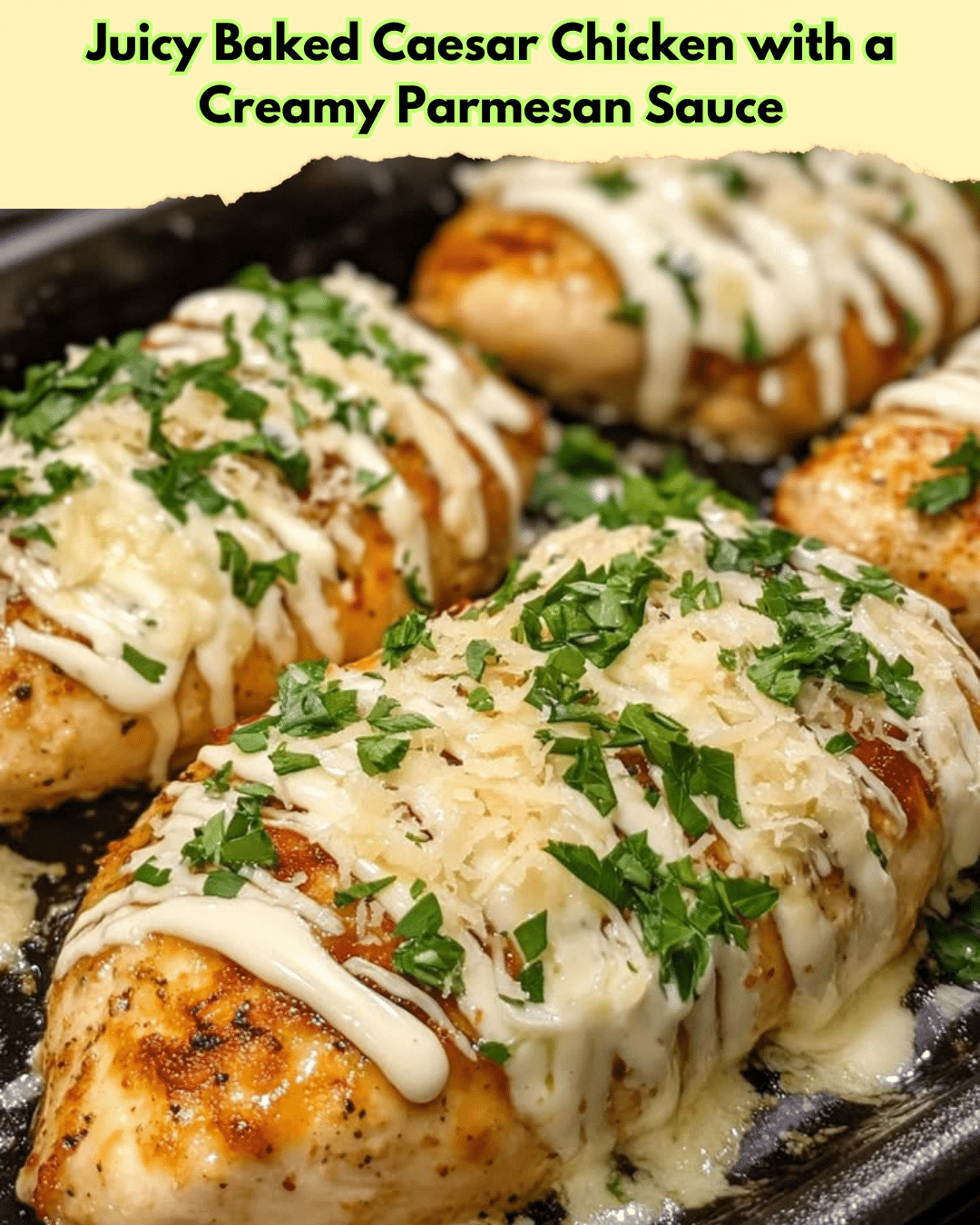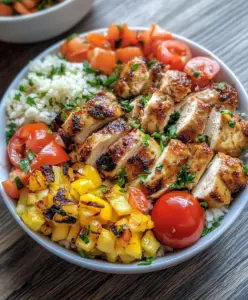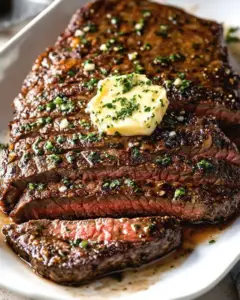Juicy Baked Caesar Chicken with a Creamy Parmesan Sauce: A Delectable Delight
Looking for a savory and mouthwatering meal that brings flavors of a classic Caesar salad into a delectable baked chicken dish? This Juicy Baked Caesar Chicken with a Creamy Parmesan Sauce is the perfect answer for those seeking a tender, flavor-loaded meal without spending hours in the kitchen. The creamy Parmesan sauce wraps each piece in a delicious blanket of cheese and Caesar dressing, offering an irresistible combination for all occasions.
This dish offers a wonderful harmony of taste and aroma with its hints of garlic, lemon, and rich Parmesan coating. Every bite of this Caesar chicken brings together tender, juicy chicken packed with savory flavors, making it a family favorite. Perfect for a weekday dinner or a special gathering, its simplicity and flavor have made it a winner in many households.
Quick Recipe Highlights
Flavor Profile: The baked Caesar chicken reveals savory goodness with the tangy richness of Parmesan and Caesar dressing. A touch of garlic elevates the aromatic flavors, adding a slight kick to round off the taste.
Texture: You’ll experience a crispy exterior with succulent chicken inside, perfectly retaining moisture for a juicy bite every time. The creamy sauce complements with silkiness that enhances the mouthfeel.
Aroma: A delightful blend of garlic, lemon, and cheese fills the kitchen, a welcoming scent inviting everyone to the dinner table.
Visual Appeal: Golden-brown crispy chicken topped with a creamy sauce and fresh herbs creates a dish that looks as terrific as it tastes.
Skill Level Needed: This recipe suits novice cooks, requiring basic skills like mixing and baking, with results that impressively resemble professional cooking.
Special Equipment: While all you need are simple kitchen tools like a baking dish and mixing bowl, a meat thermometer ensures perfect cooking, keeping the chicken juicy.
Recipe Overview
Difficulty Level: As an easy recipe, it’s a great choice for beginners. With a straightforward mixing and baking process, anyone can achieve delicious results without extra fuss.
Category: This meal easily fits into main dishes, perfect for dinner or lunch, pairing effortlessly with various sides.
Cuisine: It blends American comfort food with Italian influences from classic Caesar dressing, making it diverse and appealing to a broad palate.
Cost: Budget-friendly with everyday ingredients, this recipe provides a restaurant-quality dish at home without breaking the bank.
Season: Best enjoyed year-round, its warm and inviting flavors make it ideal for any season—from cozy winter dinners to summer cookouts.
Occasion: Versatile for both everyday meals and special occasions, it promises great flavor with minimal effort, making it a reliable go-to for any event.
Why You’ll Love This Recipe
This Juicy Baked Caesar Chicken combines both taste and texture in an exceptionally satisfying way. With its tender meat and rich sauce, each bite becomes a celebration of flavor. Using common pantry ingredients, it’s not only quick to prepare but also delivers complexity through simple ingredients.
When it comes to convenience, the recipe shines as it requires a one-pan bake, saving time on cleanup. The preparation couldn’t be easier, and it’s a reliable choice on busy days. Nutritionally, the chicken is protein-rich, and with optional lower-calorie ingredients like light Caesar dressing, it fits various dietary needs.
Sharing this meal can become a communal joy, turning weeknight dinners into delightful gatherings. As guests revel in its taste, you’ll appreciate its affordability and ease of preparation. Having the ability to adapt for larger groups or intimate settings further adds to its versatility.
The recipe isn’t just about flavor and ease; it also offers cost-effectiveness. Using everyday items allows you to create a gourmet flavor profile on a budget. These aspects make it accessible to everyone, ensuring you don’t have to compromise quality for affordability.
Historical Background and Cultural Significance
The origins of Caesar dressing trace back to the 1920s, attributed to Italian-American restaurateur Caesar Cardini. Originally part of a Caesar salad, inventive cooks began exploring its versatility beyond salads, leading to variations like this chicken dish.
Culturally, Caesar dressing blends Italian culinary traditions with American innovation, celebrated for its adaptability across different cuisines and dishes. Over the years, it evolved from a simple salad component to starring in diverse recipes, reflecting cultural melting pots in modern cooking.
This chicken recipe captures the evolution, highlighting how classic flavors adapt in inventive ways. While its roots are in a humble salad recipe, its development into a savory main dish showcases cross-cultural culinary creativity.
Regional variations might bring unique twists. In the American South, for example, additional spices could feature to accommodate local flavor preferences, demonstrating how the classic recipe embraces change across generations.
Ingredient Deep Dive
Chicken is the star, providing a versatile canvas for diverse flavor profiles. Known for being a lean protein, it supports muscle health and provides essential nutrients while being the perfect medium to absorb the tangy notes of Caesar dressing.
Parmesan cheese adds umami depth. An important element in Italian cuisine, it’s a key component in the recipe, offering both flavor and texture. When selecting Parmesan, opt for freshly grated to fully capture its nutty, robust character. Store it in airtight containers to maintain freshness, prolonged by refrigeration.
Caesar dressing, rich and creamy, infuses the dish with a signature tangy-salty flavor. When choosing dressings, those with good acidity balance will effectively enhance the chicken. Homemade dressings also work well if you prefer control over ingredients and freshness.
Lemon juice brightens the sauce, infusing freshness. Freshly squeezed is preferred for optimum flavor, elevating the dish with its citrus notes. Remember to store lemons at room temperature to maximize juice extraction.
Garlic rounds the sauce with aromatic depth. Known for its pungent, savory punch, it is essential in both Italian and global cuisines. Always choose firm, unblemished bulbs and store in a cool, dry area.
Common Mistakes to Avoid
Skipping the marinade compromises flavor; always ensure ample marination time for maximum impact.
Overbaking the chicken can lead to dryness. Pay careful attention to cooking time and internal temperature to keep the meat juicy.
Using pre-grated Parmesan may dilute flavor potency; opt for freshly grated to capture intended richness.
Neglecting seasoning balance can result in a lackluster dish. Salt and pepper are fundamental for flavor enhancement.
Ignoring sauce consistency may affect the dish’s overall appeal. Achieving the right thickness is crucial for coating the chicken evenly.
Rushing the resting time post-bake sacrifices juiciness. Allow chicken to rest before serving.
Inadequate dressing coating means missing the recipe’s full flavor potential. Ensure each piece is ample coated.
Ommiting zest may downplay the citrus profile.
Essential Techniques
Mastering marination is vital. It’s the foundational step for flavor penetration. Use ample marination time to allow the chicken to absorb great depth of flavor, elevating the dish beyond its basic components.
Achieving a golden-brown exterior requires understanding oven settings and timing. A sightly higher temperature ensures a crispy exterior while maintaining juiciness inside.
Effectively combining the sauce ensures cohesive flavor. Whisk ingredients until smooth for a consistent, even coating, preventing lumps in your sauce.
Accurate baking time is crucial. Too brief becomes underdone, too lengthy risks dryness. Monitor internal temperature to ensure perfect doneness.
Emotionally investing in presentation enhances the dish aspect. Consider colorful garnishes like parsley or lemon wedges for visual appeal.
Pro Tips for Perfect Juicy Baked Caesar Chicken
Selecting bone-in, skin-on chicken yields the best texture and flavor. The bone helps retain moisture, and the skin crisps beautifully.
Allow chicken to reach room temperature before baking for even cooking, preventing raw spots during the bake.
Use a combination of light and regular Caesar dressing for reduced calories while maintaining richness.
Invest in a meat thermometer for precise cooking. Ensure the chicken reaches 165°F for safety and juiciness.
Pre-grinding fresh black pepper over the final dish enhances aroma and taste, aligning with Caesar flavor notes.
For vibrant presentation, sprinkle fresh parsley or basil just before serving. It adds a pop of green and enriches flavors.
Avoid covering the chicken to maintain a crispy top. The uncovered bake promotes ideal texture.
Letting sauce stand at room temperature before serving allows flavors to meld and present harmoniously.
Variations and Adaptations
Regional variations can include added herbs or spices unique to local palettes—rosemary or thyme create an earthy note.
Seasonal adaptations incorporate what’s fresh—citrus zest variations in summer or robust spices during colder months enhance depth.
Dietary modifications allow for gluten-free dressing substitutions or dairy-free cheese alternatives, supporting personal health needs.
Alter flavor profiles with additions like pesto for a different take, merging two classic tastes harmoniously.
Texture modifications such as breading the chicken provide alternative mouthfeels against the creamy sauce.
Experiment with presentation by slicing chicken before plating, emphasizing artistry in serving styles.
Serving and Presentation Guide
Plating involves slicing crosswise for an elegant display. Arrange slices overlapping in a fan shape for visual appeal.
Garnishing ideas include fresh herbs or edible flowers for a burst of color, enhancing the plate’s aesthetic.
Traditionally, Caesar chicken pairs with simple accompaniments—think simple greens or light salads to balance richness.
Modern suggestions might serve it atop pasta or quinoa, adding texture while absorbing the glorious sauce.
Temperature considerations are fundamental; serve immediately post-rest for best juiciness.
Portion control ensures proper servings, ideally one breast per guest, considering extra sides or courses offered.
Wine and Beverage Pairing
When it comes to wine, pair with a light to medium-bodied Chardonnay, complementing creamy textures beautifully.
Non-alcoholic alternatives include lemon-infused iced tea, offering a refreshing citrus contrast.
If applicable, a rich black tea pairs marvelously, inciting an unusual but satisfying finishing touch.
Temperature considerations suggest chilled solutions accentuate the freshness of the meal.
Serve wine slightly chilled, aligning perfectly with the chicken’s luscious sauce.
Storage and Shelf Life
Keep leftovers in an airtight container, retaining moisture and flavor. Refrigeration should not exceed 3 days to maintain freshness.
Temperature under 40°F in the fridge is essential for preventing spoilage. Avoid room temperate exposure for too long.
Consider containers that seal tightly, glass preferred for optimal preservation.
Recognize spoilage through any off smell or color changes—it’s better to err on caution.
For reheating, use gentle methods like low oven temperatures to avoid drying or toughening the meat.
Freezing guidelines suggest layering chicken individually to prevent sticking—ideal for future convenience.
Make Ahead Strategies
Plan your timeline with prep done a day before serving, allowing flavors to meld overnight.
Store between steps in clear containers, aligning with name labels to ensure easy access.
The flavor only develops deeper with time; avoid extended make-ahead as freshness diminishes past a few days.
Assembly advice includes keeping components separate until needed to preserve textural integrity.
Reheating instructions advocate gentle warming—consider sauce separation until ready to plate.
Adding fresh elements at the end, like herbs, boosts appearance and taste, masking any staleness from storage.
Scaling Instructions
For smaller batches, proportion ingredients precisely for quality retention—reducing beyond half might affect consistency.
Scaling up demands larger equipment, such as wide baking trays to keep chicken layers single-stacked.
Timing shifts minimally unless overcrowding occurs; maintain spacing for heat circulation.
Efficient storage involves using various sizes of airtight containers, protecting from freezer burn.
Larger recipes call for fresh purchases, ensuring sustainability in taste and tender texture.
Nutritional Deep Dive
The nutrient ballparks within this Caesar chicken involve proteins from chicken breasts providing muscle-building elements.
Macronutrient profiles emphasize lean meats and moderate fat content, perfectly aligning with health-conscious goals.
Vitamins like B6 and B12 occur in chicken, while calcium and vitamin D derive from dairy in the sauce.
Health benefits are bolstered with olive oil use, enriching with heart-healthy fats.
Consideration for balanced meal planning involves portion sizes of main repeat dishes, balancing with whole grains or veggies.
Adapting portion control aids meticulous diets, focusing on caloric and nourishment balance.
Dietary Adaptations
Gluten-free involves ensuring dressing and thickeners lack hidden gluten ingredients.
Dairy-free adaptation suggests cheese substitutes or nutritional yeast to emulate similar flavor profiles.
For Vegan options, consider plant-based proteins along with vegan creamy dressings to replicate signature Caesar taste.
Low-carb focus requires quality control over dressing sugars; ensure minimal starch content with substitutes.
Keto adjustments demand high-fat choices like extra cheese or butter-based vinaigrettes.
Paleo includes awareness of processed components, ensuring everything aligns with holistic natural eating.
Low-FODMAP makes sure dressings avoid incompatible compounds, catering needs specifically.
Troubleshooting Guide
For texture dilemmas, re-emphasize on resting time and checking internal temperature for proper adjustments.
Flavor balance becomes key; avoid overt saltiness or blandness with attention to measurements.
Alleviating temperature issues means investing time in precise pre-bake checks and thermometer use.
Equipment challenges often suggest checking if racks and pans accommodate sizes needed, averting uneven cooking.
Ingredient substitutions call for careful planning, avoiding drastic changes without taste tests.
Managing timing concerns through multi-step adjustments, ensuring scheduled precision for best results.
Recipe Success Stories
Community praise lies in simplicity, with users finding confidence through approachable steps.
Variation attempts highlight succulent recipes like lemon zest or paprika inclusions, diversifying outcomes.
Adaptation stories feature culinary twists like caper inclusion, inviting vibrant acidity.
Reader suggestions underlie recipe simplicity, requesting minimalistic perfection when lacking time.
Photography tips arise through detailing color contrasts, emphasizing dish beauty through greens.
Frequently Asked Questions
A: While skinless breasts are leaner, the skin retains moisture during cooking, contributing to juicy results. If opting for skinless, basting can counteract potential dryness.
Q: How do I avoid a watery sauce?
A: Ensure thickening by controlling liquid dressing and cheese quality, allowing ample reduction time to evaporate excess moisture for optimal sauce consistency.
Q: What’s the best substitute for Parmesan?
A: Aged cheddar or Pecorino Romano can substitute nicely, offering a similar flavor profile. Grana Padano is also a viable option, maintaining recipe nostalgia.
Q: Can I prepare this dish ahead of time?
A: Certainly, though prepare only partway by marinating and refrigerating; bake fresh before serving to experience the ideal texture and aroma.
Q: What’s the best side dish for this chicken?
A: Most suggested are light salads or steamed vegetables—counterbalance rich flavors providing both essential nutrients and contrast.
Q: How can I incorporate this into Paleo?
A: Employ dairy-free cheese and substitute standard dressing for homemade compliant alternatives—always using unprocessed ingredients.
Q: Does the recipe work with boneless thighs?
A: It does! Thighs offer more succulent options due to higher fattiness. Adjust cooking time by adding a few minutes to ensure thoroughness.
Q: Can I double the recipe for a crowd?
A: Doubling is straightforward. Use larger trays while maintaining spacing to promote even browning, paying attention to oven crowding and air circulation.
Q: How to recharge leftover chicken?
A: Reheat gently at lower temperatures to avoid ruining texture, preserving sauciness through gradual heating and moisture setups.
Q: What’s the impact of using reduced-fat dressing?
A: A lower-fat dressing offers calorie control, though the taste may lean towards less richness. Add olive oil for missing elements when desired.
Additional Resources
For those intrigued by variations, experimenting with different salads or dressings opens an array of taste experiences.
Technique guides help with mastering the art of a perfect bake, tracking culinary skill-building.
Ingredient information provides insights on ideal selections, finding quality products within your local market.
Experiment with atypical equipment suggestions for fascinating twists, discovering fun kitchen gadgets.
These seasonal ingredients interact perfectly with various dinners, letting your imagination flow during every preparation.
Print
Juicy Baked Caesar Chicken with a Creamy Parmesan Sauce
Description
A deliciously juicy baked chicken dish with Caesar dressing and a creamy Parmesan sauce that is perfect for a family meal or dinner party.
Ingredients
For the Crust:
- 4 boneless, skinless chicken breasts
- 1 cup Caesar dressing
- 1/2 cup grated Parmesan cheese
- 1/2 cup sour cream
Instructions
1. Prepare the Crust:
- Preheat your oven to 375°F (190°C).
- Place the chicken breasts in a baking dish and coat evenly with Caesar dressing.
- In a small bowl, mix together the Parmesan cheese and sour cream, then spread the mixture over the chicken.
- Bake for 30 minutes or until the chicken is cooked through and the sauce is bubbly and golden.
Notes
You can customize the seasonings to taste.




